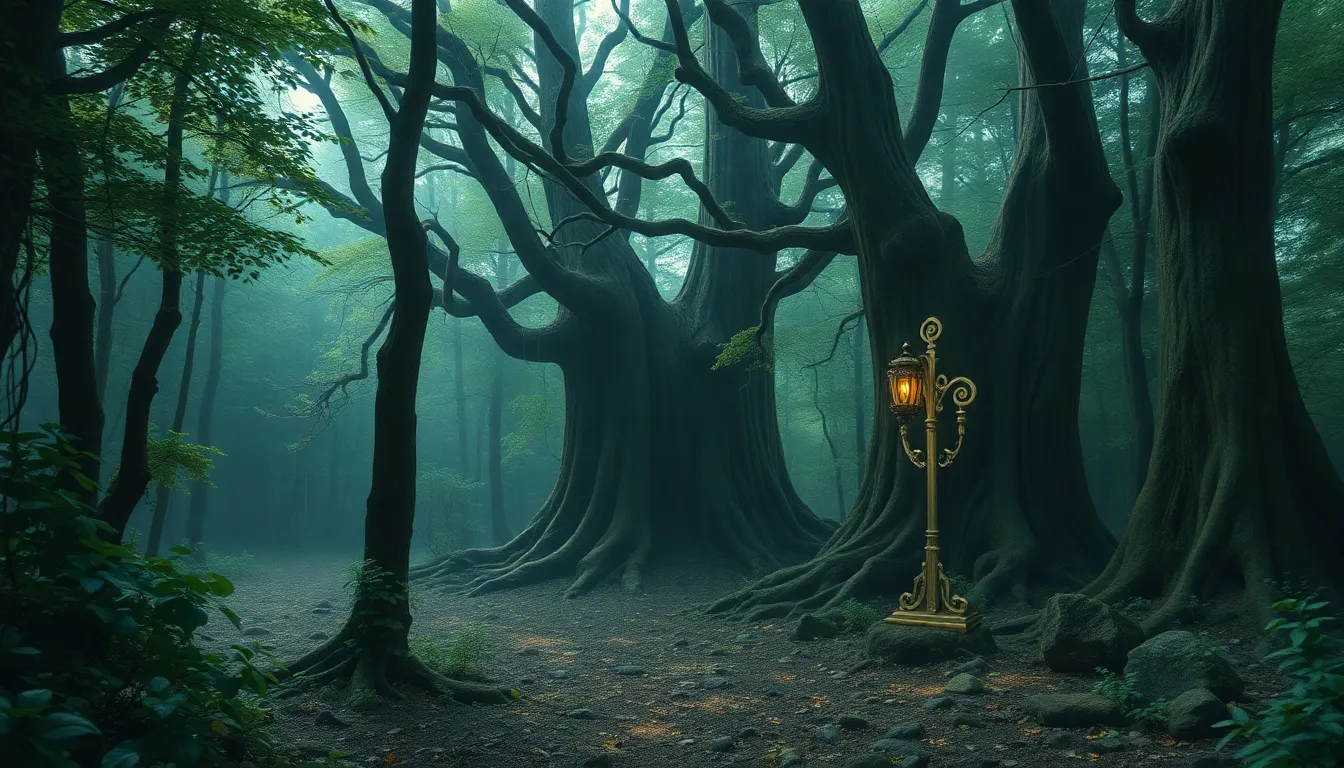Enchanted Forests: Guardians of Ancient Wisdom
I. Introduction
Enchanted forests are mystical woodlands that evoke a sense of wonder and magic, often depicted in folklore and fairy tales. These forests are not merely collections of trees; they are vibrant ecosystems teeming with life and steeped in cultural significance. The concept of ancient wisdom encompasses the knowledge and practices of indigenous peoples and traditional societies that have been passed down through generations, often rooted in a deep connection to nature.
Exploring the relationship between forests and cultural heritage is essential, as it highlights how these natural environments shape human experiences, beliefs, and sustainable practices throughout history.
II. The Mystique of Enchanted Forests
Throughout history, enchanted forests have held a significant place in the cultural narratives of various societies. They are often seen as magical realms where ordinary rules do not apply, where the mystical is intertwined with the mundane.
Folklore and mythology surrounding enchanted forests are rich and varied. Many cultures have tales of spirits, fairies, and otherworldly beings residing within their depths. For example:
- The Forest of Arden in Shakespeare’s “As You Like It” serves as a backdrop for transformation and discovery.
- The tales of the Brothers Grimm often feature enchanted woods that serve as both a refuge and a place of peril.
In literature and art, forests symbolize various themes, including mystery, adventure, and the unknown. They often represent a journey into the subconscious, a place where characters confront their fears and desires.
III. Biodiversity as a Repository of Wisdom
Biodiversity plays a crucial role in maintaining ecological balance, ensuring that ecosystems function effectively. Enchanted forests are biodiverse habitats that house countless species of plants, animals, and microorganisms, each contributing to the overall health of the environment.
Traditional ecological knowledge, often passed through generations, serves to educate communities about sustainable practices. This knowledge includes:
- Understanding seasonal changes and animal behaviors.
- Identifying edible and medicinal plants.
- Utilizing natural resources without depleting them.
Medicinal plants found in enchanted forests have provided ancient remedies that continue to hold significance today. For instance, plants like willow bark have been used since ancient times for pain relief, leading to the development of modern aspirin.
IV. Spiritual Connections: Forests and Human Experience
For many indigenous cultures, forests are sacred spaces imbued with spiritual significance. They are often seen as living entities that communicate with humans through nature. Spiritual practices related to forests can include:
- Rituals to honor the spirits of the land.
- Ceremonies that celebrate the cyclical nature of life.
Forests foster a sense of community and identity, as they are often central to cultural practices and collective histories. Personal anecdotes from individuals who have spent time in forests reveal transformative experiences, such as:
- Finding solace and healing in nature.
- Experiencing moments of profound connection and clarity.
V. The Role of Enchanted Forests in Environmental Wisdom
Ancient traditions often embody sustainable practices that have allowed communities to thrive alongside their environments. These practices include:
- Crop rotation and agroforestry.
- Using fire as a tool for managing landscapes.
Forest conservation efforts benefit greatly from the lessons learned through indigenous stewardship, emphasizing respect for nature and a holistic understanding of ecosystems. However, modernity poses challenges to these ancient wisdoms, as urbanization and industrial practices threaten the delicate balance of forest ecosystems.
VI. Enchanted Forests Around the World
Enchanted forests are found across the globe, each with its unique ecological features and cultural stories. Notable examples include:
1. The Black Forest, Germany
Known for its dense trees and fairy tale charm, the Black Forest is steeped in German folklore, with tales of mythical creatures and enchanted beings.
2. Aokigahara, Japan
Also known as the Sea of Trees, Aokigahara is a forest at the base of Mount Fuji, famous for its serene beauty and deep cultural significance, often associated with spiritual reflection.
3. The Amazon Rainforest, South America
The Amazon, often referred to as the “lungs of the Earth,” is a vast ecosystem rich in biodiversity and home to numerous indigenous cultures, each with their own stories and connections to the land.
VII. The Science Behind Enchanted Forests
Recent research on forest ecosystems has unveiled the complexities of these environments, highlighting their roles in carbon storage, climate regulation, and biodiversity preservation. Preserving ancient trees and ecosystems is vital, as they harbor unique species and genetic diversity that can contribute to scientific understanding and resilience against climate change.
Modern science increasingly validates ancient wisdom, showing that traditional practices often align with ecological principles that promote sustainability and environmental health.
VIII. The Threats to Enchanted Forests and Their Wisdom
Despite their importance, enchanted forests face significant threats, including:
- Deforestation and urbanization, leading to habitat loss.
- Climate change, which alters ecosystems and threatens species.
- Loss of traditional knowledge and cultural practices as younger generations move away from ancestral lands.
IX. Reviving the Wisdom of Enchanted Forests
Efforts to revive the wisdom of enchanted forests include various initiatives aimed at conservation and restoration. These initiatives focus on:
- Integrating traditional knowledge with modern environmental practices, fostering a holistic approach to forest management.
- Implementing education and awareness programs to promote forest guardianship and inspire communities to protect their natural heritage.
X. Conclusion
The enduring legacy of enchanted forests as guardians of wisdom is a testament to the deep connections between nature and humanity. These forests not only provide ecological benefits but also embody cultural narratives and ancient practices that deserve reverence and protection. As we move forward, it is crucial to advocate for the preservation of these natural wonders and the wisdom they hold, ensuring that future generations can experience the magic of enchanted forests.



